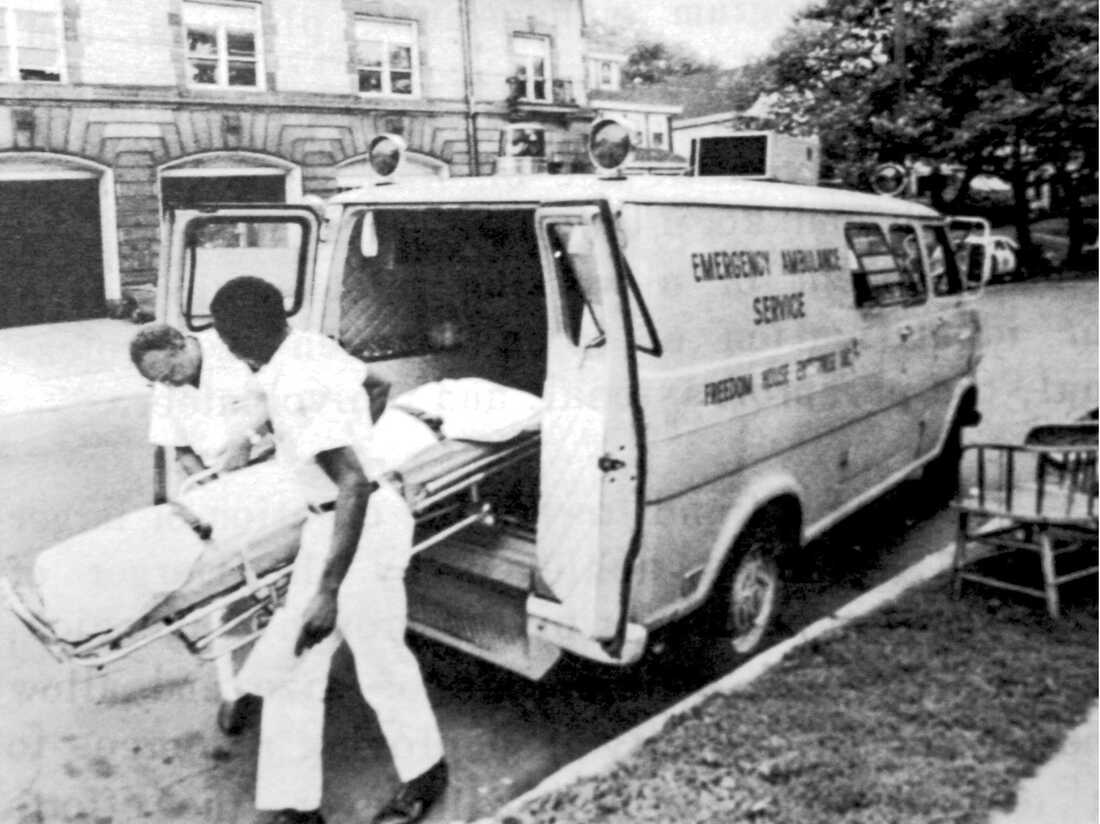
In 1967, a revolutionary emergency medical service was born in Pittsburgh’s Hill District. It wasn’t funded by a major hospital. It wasn’t backed by a large city budget. It was powered by community resolve, led by Black professionals, and designed to respond to the health crises that too often went ignored. This was the Freedom House Ambulance Service.
Though its operation lasted less than a decade, from 1967 to 1975, its influence on emergency medical care, racial justice, and professional opportunity for Black Americans remains foundational. The program didn’t just respond to medical emergencies. It reshaped how America thinks about who gets to deliver care, and how communities are treated during their most vulnerable moments.
The Landscape Before Freedom House
Before Freedom House, emergency care in Pittsburgh—and in much of the country—was disjointed, often discriminatory, and dangerously underdeveloped. In many Black neighborhoods, ambulances were unavailable or unreliable. Transport to the hospital, if it happened at all, was often provided by police or funeral homes. These services lacked trained medical staff and were rarely focused on saving lives.
Black communities, in particular, were systematically excluded from receiving timely and compassionate emergency response. This gap was not only a reflection of medical neglect. It was part of the broader racial inequities embedded in the healthcare system. The Civil Rights Act of 1964 had desegregated hospitals on paper, but disparities in care, employment, and access remained firmly in place.
This was the environment that gave rise to Freedom House.
A Community-Based Answer to Crisis
The Freedom House model was rooted in a simple but radical premise: underserved Black communities deserved high-quality emergency care delivered by trained professionals from their own neighborhoods. With support from medical pioneer Dr. Peter Safar of the University of Pittsburgh and community leaders like Philip Hallen and Nancy Caroline, Freedom House recruited Black men—and later women—from Pittsburgh’s Hill District.
Many of these recruits faced barriers to employment due to poverty, limited education, or prior incarceration. Freedom House broke through those barriers. It didn’t just give jobs. It created a pipeline to skilled, respected, and impactful careers in healthcare.
Their training was intense and thorough. The paramedics received 300 hours of instruction covering anatomy, CPR, cardiac care, intubation, IV administration, defensive driving, and patient transport. This went far beyond anything that existed at the time, setting a new national standard for paramedic education, as documented by Team Rubicon.
Setting the Standard for National EMS

Freedom House wasn’t operating in isolation. Its curriculum, developed with Dr. Safar, laid the groundwork for what would become the nation’s first formal paramedic training program. These standards were later adopted by the U.S. Department of Transportation and used to create the national EMS curriculum.
By 1975, Freedom House’s approach had shaped protocols across the country. Cities like Los Angeles, Miami, and Jacksonville modeled their own EMS systems after it. The National Highway Traffic Safety Administration (NHTSA) adopted its ambulance design standards, ensuring readiness and uniform care nationwide.
Freedom House redefined what EMS could and should look like. It proved that trained paramedics—regardless of race or background—could deliver lifesaving care outside the walls of hospitals. It also introduced the concept of field medicine: treating critical issues at the scene, not just during transport.
Civil Rights in Action
The timing of Freedom House’s operation, at the height of the civil rights movement, was not coincidental. The initiative was part of a broader fight for justice, equity, and representation. While other civil rights efforts focused on voting rights, education, and housing, Freedom House extended those demands to healthcare and employment.
Freedom House made civil rights visible in ambulances and on city streets. It empowered local residents with medical training and professional dignity. It provided compassionate care during riots, overdoses, and health emergencies. It showed what equity looks like in action—turning neighbors into healers, and replacing discriminatory systems with community trust.
Patients who had previously feared emergency services now saw familiar faces arriving to help. That shift built a level of trust that couldn’t be manufactured by policy alone. Freedom House demonstrated that effective healthcare is not just clinical. It is relational and community-rooted. This reality was captured in Smithsonian Magazine's profile.
Career Pathways for Black Paramedics
Freedom House didn’t just change EMS. It opened doors for Black Americans to enter healthcare careers that had long been closed off. The service specifically recruited individuals from disadvantaged backgrounds—many of whom were unemployed, had criminal records, or had not finished high school.
These individuals were trained rigorously and respected widely. Many of them went on to build lasting careers. John Moon, one of the original Freedom House paramedics, later became the Assistant Chief of Pittsburgh’s EMS division. Others pursued roles in training, management, and public health.
The visibility and success of Freedom House paramedics also challenged stereotypes. It proved that Black professionals could excel in high-pressure, high-skill medical roles. This visibility inspired future generations and helped diversify EMS programs nationwide, a point reinforced in a LinkedIn analysis.
A Legacy Cut Short
Despite its proven success, Freedom House was shut down in 1975. The reasons were political and racial. When Pittsburgh created a new citywide EMS system, most of the Freedom House paramedics were excluded—even though they were better trained than their replacements.
The closure was a setback. It highlighted the ongoing resistance to Black-led excellence, especially in public systems. Even as Freedom House’s standards were adopted nationally, the people who created them were pushed aside locally.
The shutdown didn’t erase the service’s impact. But it underscored a painful truth: progress in racial justice and healthcare equity remains vulnerable to political tides and institutional bias.
The Lasting Impact
Today, Freedom House is widely recognized as a pioneer. Its standards for paramedic training, ambulance design, and emergency response are embedded in modern EMS systems across the country.
It also left a cultural and social imprint. It showed that Black communities, when trusted and equipped, can lead the way in healthcare innovation. It validated the idea that public health initiatives should be designed with and for the people they serve.
Freedom House set a precedent for community-based care models, culturally competent training, and inclusive hiring practices. These principles are still being explored and implemented in today’s public health and emergency response systems.
Why Freedom House Still Matters
In the current landscape of healthcare disparities, workforce shortages, and racial health inequities, the Freedom House model offers a blueprint. It shows how to close gaps by investing in people. It reminds us that healthcare equity includes who gives care, not just who receives it.
The urgency of that message has not faded. Black communities still face higher rates of medical mistrust, limited access to emergency services, and underrepresentation in healthcare professions. Addressing those gaps requires more than policy. It requires leadership, investment, and innovation from within the communities most affected.
Freedom House proved that is possible. Its impact remains woven into the structure of EMS today, and its story continues to inspire those fighting for justice in health.

.avif)
.jpg)












